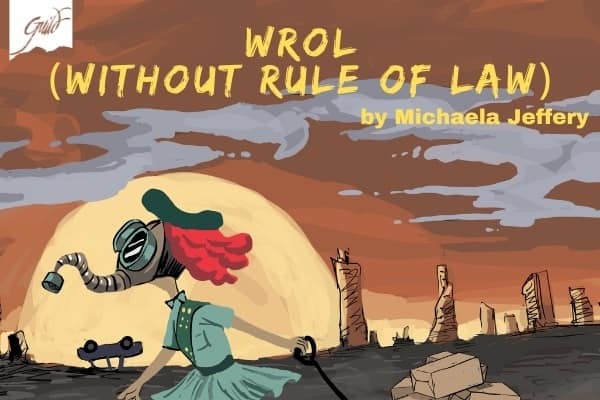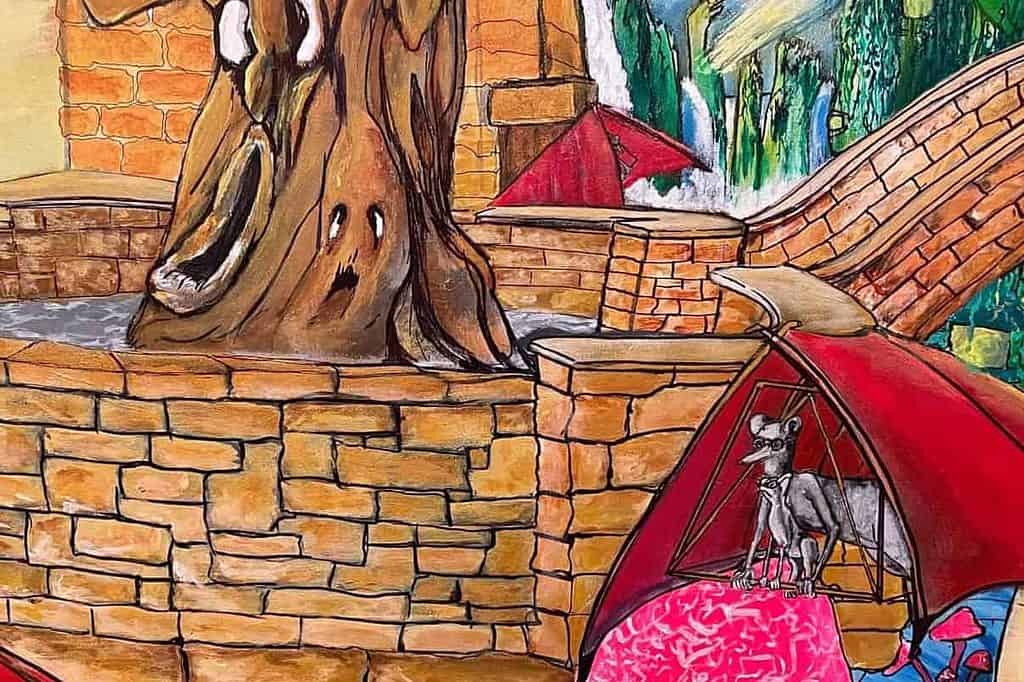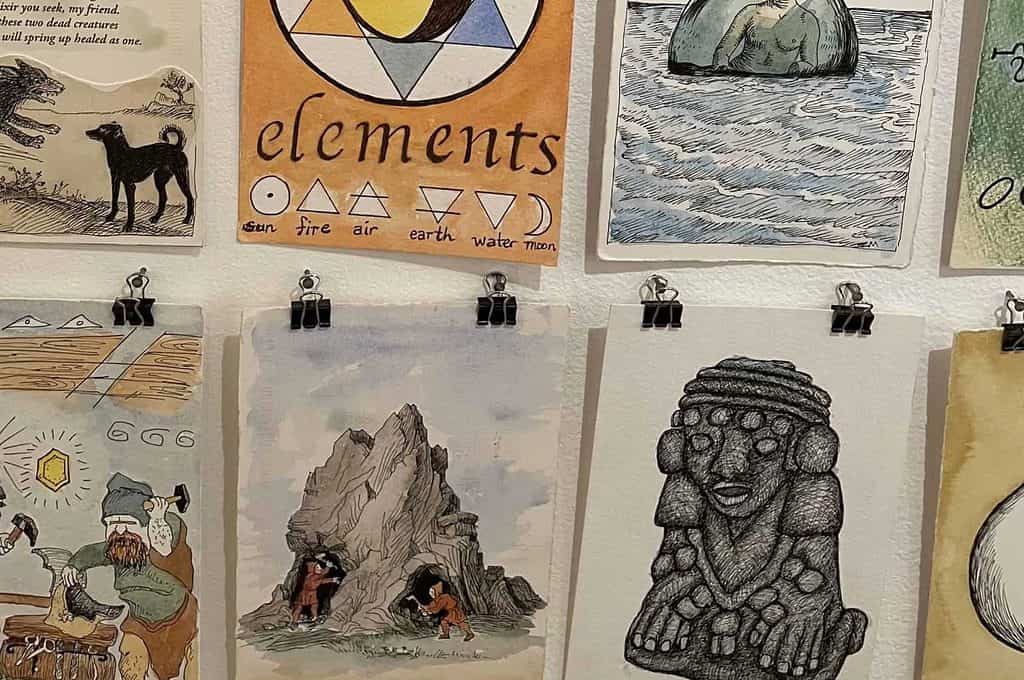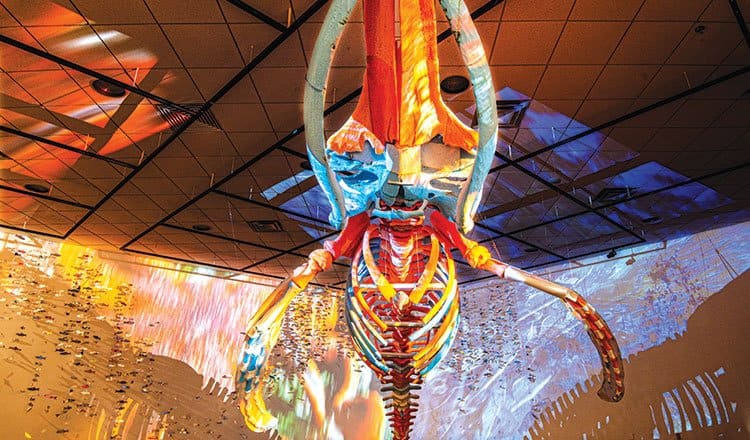What if a gallery contains only a few works, with room to breathe between them? Whitehorse artist Joyce Majiski’s new shows at Arts Underground offer a refreshing change from the busy salon-style hangings that characterizes many art presentations in the Yukon.
Majiski offers two shows in the basement gallery until January 29; visit Gros Morne in the front room and continue through to Photo Processes in the back.
Majiski’s September 2011 residency at Gros Morne National Park in Newfoundland inspired Gros Morne. The show consists of two assemblages and five very large works on paper, using acrylic and pencil. The largest is about 4 x 8 feet in size and the rest are not much smaller. Unframed, they are installed with pushpins. No price is specified; viewers are invited to contact the artist if interested in purchasing a work. In this way, art is allowed space to be an experience rather than a commodity.
Most of the works on paper include marks that seem to be made by a fishnet that’s been soaked in paint and then applied to the paper in big swirling gestures. Wild, watery, splashy marks at the edge of the painted areas evoke the ocean. Majiski plays with mark-making interwoven with representation. She draws or paints boats, seagulls, shorebirds and lobster traps into these exuberant gestures.
“Drydock” differs in approach. Majiski renders a realistic boat in rusty sepia and grey paint. The image fades out into the white surrounding area of the paper on all sides. The boat is placed low and to the right, not dead centre, creating a grounded feeling. On closer inspection, the dabbed brush marks and quick pencil lines confer a vulnerable character to this boat.
Majiski’s assemblages of beach-found treasures, like most of the drawings, include fishnet. They’re both based on green-painted books with hollows carved out of their glued-together pages.
“Artifacts of Passage I” includes a feather, rock and crab carapace, beach glass and a pop can pull-tab and can-end. “Artifacts of Passage II” includes many paper and aluminium fish shapes sewn or tied into the net, which is laid over beach plastic, including a plastic spoon, assembled with a thick and, in places, bubbly acrylic gel medium. The latter seems to speak to the way we depend on the ocean for much of our food, yet fill it with garbage.
In the back room, Photo Processes functions as an introduction to some of the many photo-based printmaking processes Majiski uses to create her many-layered art prints. You will find examples and explanations of colour separations, photo etchings, an etched copper plate (itself very beautiful with oxidation around it), potassium dichromate prints, prints made using “liquid light,” photo silk-screens, Polaroid pictures in large format, as well as digitally altered photographic and more painterly areas of colour. These things can give the viewer a sense of some of the many methods Majiski layers in creating her one-of-a-kind “monoprints.”
The back room was opened as gallery space for the first time during Arts Underground’s “Something Special” Christmas show. It will normally be devoted to special projects.
See Joyce Majiski’s Gros Morne and Photo Processes at Arts Underground on Main St. in Whitehorse until January 29.




